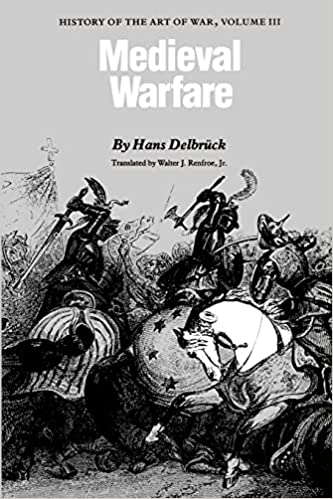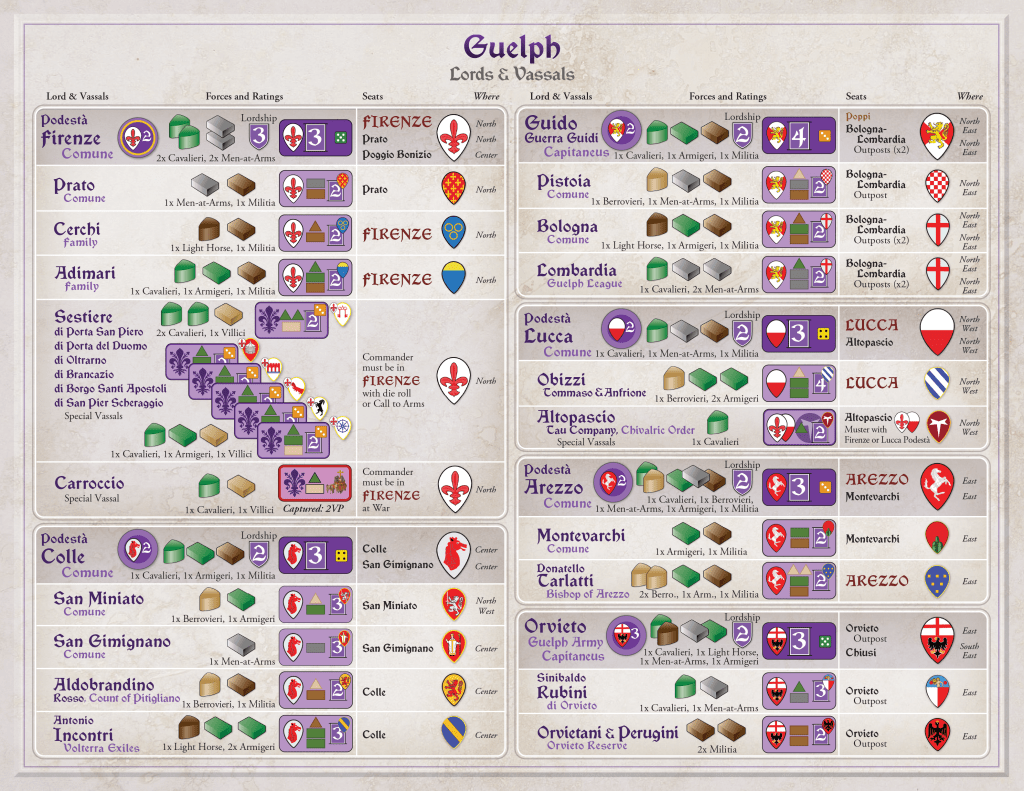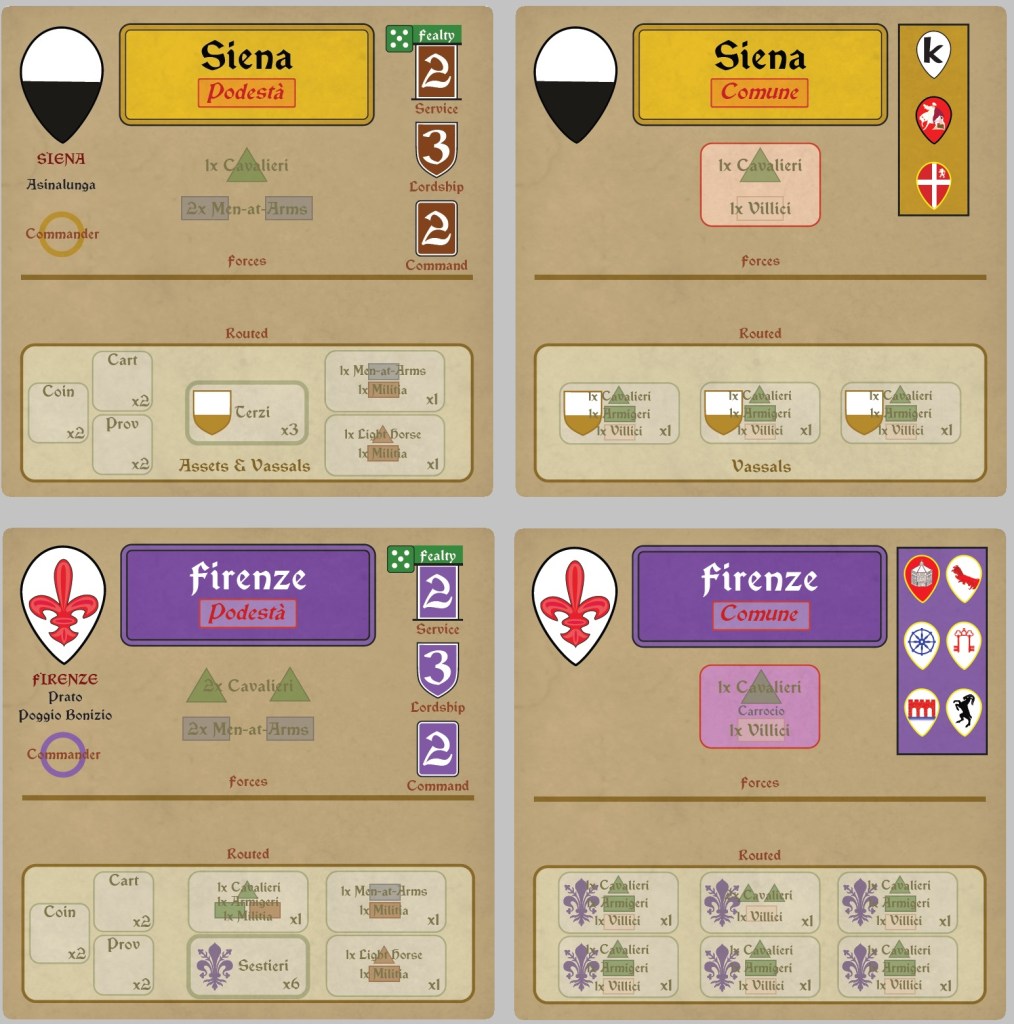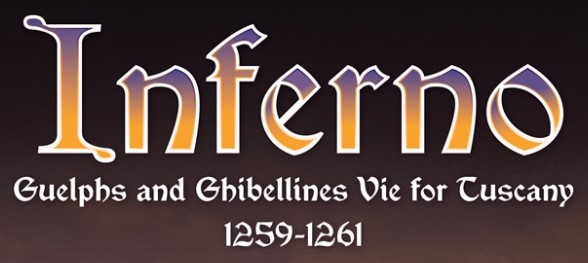It seems that the hottest series out there today is the Levy & Campaign Series from GMT Games. Initially started by Volko Ruhnke with his Nevsky: Teutons & Rus in Collision, 1240-1242 and then followed up with Almoravid: Reconquista and Riposte in Spain, 1085-1086 there are 3 other titles currently listed on the P500 with at least another dozen (or more) that have yet to be announced but are being developed and playtested. With this justified excitement, as we have played and enjoyed Nevsky, I have finally got around to reaching out to the designer of Inferno: Guelphs and Ghibellines Vie for Tuscany, 1259-1261 Enrico Acerbi to get the skinny on his game that is getting ready to go to the printer and could be on our tables by winter.

Grant: First off Enrico please tell us a little about yourself. What are your hobbies? What’s your day job?
Enrico: I am a doctor, an immunohaematologist specifically, retired, but I have also written and published several history books. My main hobbies are obviously designing and playing boardgames but I also follow sports (since I am 70 years old, I haven’t played them for a long time).
Grant: What motivated you to break into game design? What have you enjoyed most about the experience thus far?
Enrico: It was in the 1970’s, when I discovered Strategy & Tactics Magazine. Being a fan of history, I began to design something on paper. Then, when PC’s spread, I started using vector software and drawing more professionally, sometimes publishing a web-zine called No Turkeys!, with a complete DTP game in every issue.

Grant: What designers would you say have influenced your style?
Enrico: At the beginning, nobody in particular, but all of the classic SPI school designers for sure. Later I learned to appreciate many designers like John Prados, Greg Costikyan, Eric Lee Smith, Mark Herman, Brian Train, and Hermann Luttmann. Of course my personal mention goes to Volko Ruhnke.
Grant: What other designs have you completed? How did those designs help you in this endeavor?
Enrico: I completed and I have at least 40 finished projects in my drawers, but I have published only about 10 to 15 of those (all for Italian producers). As a historian, I often helped foreign designers with research (i.e., Kevin Zucker). Everything I designed had refined my experience but, above all, had increased my historical knowledge and had helped my method of doing historical research.

Grant: What historical period does Inferno cover?
Enrico: Like all the Levy & Campaign Series games, Inferno covers a limited period of three years (1259-1261), a medieval period of Italy’s Tuscany when Florence fought against Siena (each faction, Guelph and Ghibelline, with its own allies).
Grant: Who are the Guelphs and Ghibellines, and what role did they play in history?
Enrico: The Guelphs were literally the part that supported the Pope of Rome, while the Ghibellines supported the German Emperors. In reality, however, in some historical periods, the differences were not so clear, so much so that local wars were fought above all for political and economic interests. Italy over many centuries, however, was central to all European matters, mainly because of the presence of the Holy See at Rome.
Grant: What sources did you consult on the history of this time period? What one source would you recommend?

Enrico: As you can imagine I have (and we have) consulted lots and lots of sources, many chronicles in Latin and many academic works in Italian. I could recommend Hans Delbrück, History of the Art of War, Volume III: Medieval Warfare (Lincoln and London 1990). However, it must be underlined that in Inferno’s Background Book there is a very large bibliography, a thing rarely found in a boardgame, and for which we must ascribe a great merit to Volko Ruhnke.
Grant: What is it like designing a game in a wildly successful series like Levy & Campaign? What challenges did you have with molding the system to fit this time period?
Enrico: Inferno’s design was already complete at the beginning, because Levy & Campaign is a very pliable series that adapts well to many historical events, starting with its lead volume Nevsky. So, I did not have any particular challenge. The real exciting experience, however, was working with the group of playtesters and developers; it was a path of great personal growth, and I will remember this period forever with great joy.
Grant: What role did Volko Ruhnke play in the design?
Enrico: Volko was all important and central to the design. Coordinator, designer, organizer, but, above all, he was the figure who made the final decision on everything. He is truly an almost mythical figure, Tolkien would say a Valar.
He [Volko Ruhnke] is truly an almost mythical figure, Tolkien would say a Valar.
Grant: What changes can we expect to the Levy & Campaign Series system to tell this story?
Enrico: The system is still very young; only three games in. A single word, however … unpredictability ! … This is the greatest impression that Inferno arouses. It personally made me pleased, also, that this game has been considered the most introductory to the series, so far, perhaps because the distances from Locale to Locale on the map are not so long to make the rules of Supply overly complex.

Grant: What different Lords are available to muster? What are the different advantages of each sides Lords?
Enrico: In this game we have feudal lords and captains, but we must take note of the Italian Comuni, small republics, modeled on the ancient Roman Republic, that had consuls, councils, and captains and were governed by a Podestà. The Podestà Lords in the game are generally more powerful than the various other Lords, and those of the two capital cities, Firenze (Florence) and Siena, can also have a second mat, which enables them to recruit their Urban Armies. Once again, I appreciated the high sensitivity of Volko in keeping the original Italian names (many untranslatable in English). After all, almost all political and military terminology derives from Latin or Greek words.

Grant: What area of Tuscany does the map cover? What unique terrain features are there?
Enrico: The map represents almost all of Tuscany (only a few miles are missing in the north and south) with the main Strongholds of the time (castles, Comuni towns, and cities). The terrain’s importance in the game is to determine Track/Road movement (only Pisa can use galleys for sailing up the course of the Arno River).

Grant: What is the force structure of the various units comprising the armies? How do each side’s units differ?
Enrico: Each Lord or Podestà has a mat with some forces (various cavalry and infantry units) and with a Campaign’s Assets (food, wagons, and money) that form their army (or Oste). In addition, each mat has a series of Vassals that can be Mustered and that can provide added forces to the Lord/Podestà’s army. Cavalry forces vary from more elite ones such as Ritter (German knights) to the less strong ones like the Light Horse. The infantry forces differ among many types, the best are Men-at-Arms and the weakest the Villici (peasants).

Grant: What unique units are available to both sides?
Enrico: Levy & Campaign Series units are very particular. We can safely say that each player has units different from his opponent, even if similar for employment. Some may differ because they have thicker defenses (armor) or may use archers and crossbows. A curiosity of this game is the ability to Capture Knights pieces and keep them captive in order to receive a Ransom.
Grant: What role do the cards play in the design?
Enrico: The game is not card driven. Cards are important, however, either at the beginning of the Levy phase, to assign special Capabilities to some Lords/Podestà or for the Events, drawn at each turn. (A turn is 60 days of the Calendar on the board, where you note the duration of military Service of the various Lords/ Podestà). Then there is a deck of Command Cards, used to plan the actions of the military Campaign, after the Levy. In practice, each player forms his own deck, selecting the Lords/Podestà that will be activated in sequence, inserting Pass Cards if you do not have sufficient troops to activate, and inserting special Treachery Cards, if earned on the battlefield.

Grant: Can you show us some examples of cards and explain how they work?
Enrico: These are Command Cards. You see a Treachery Card for Pisa, a Pass card, and three activation cards for Siena, Santa Fiora, and Orvieto. The first card (top left) is obviously the back of the deck’s cards. Once you gain a Treachery Card, you can add it to the Command Plan stack that the player forms each Turn’s Campaign phase. That card will allow that Lord to raise a Revolt or to Bribe some enemy Vassal to change him into a Turncoat.

These are Arts of War Cards. They have an upper part which is an Event to be played (or to be held in hand to play later). The War events may be played to bring about a special situation called Call to Arms, which allows the Muster of the Urban Armies of the two Leading Cities. The lower part of the cards are special Capabilities, which are assigned to a whole side or to a single Lord/Podestà to stay with them until they Disband (or the player changes the card out with another one). Some of them can be given to any Lord/Podestà, others have coats-of-arms that limit their use to one or a few certain Lords/Podestà.
Grant: How does combat work? How did you go about deciding to assign relative strengths to different unit types? What is the best unit on the field?
Enrico: Battles can be played by Arraying the mats, one in front of the other, or using a small Battle mat, on which you put only the Lord cylinders or the units (wooden triangles and rectangles). The sequence of Battle is: 1- Archery steps (Defending then Attacking); 2- Melee steps (Horse Defending then Attacking, Infantry Defending then Attacking). Each unit causes ½, 1, or 2 Hits, depending on Forces and Strike type (seen on the Forces table). You do not roll to generate Hits—they generate automatically based on the Forces Striking. The total Hits are then assigned, some can be cancelled by Walls or Armor, otherwise units Rout. A unit is Routed as soon as it fails to negate a Hit with a successful Protection roll. Routed units immediately slide back on mat; Routed units may not Strike or absorb Hits. When all of a Lord’s units Rout, the Lord Routs—immediately take him off the Array. If all Lords of a side Routed or it Conceded the Field, that side loses the Battle. If not, it may begin a new Round. The most powerful unit is the German Ritter.
Grant: How do sieges work? What elements did you feel most important to include in the design? How do the better castles in [Italy] change things?
Enrico: Sieges are important because you can force Surrender to conquer Strongholds, but also because they allow you to block enemy Lords/Podestà inside the walls, without allowing them operate anywhere (up to a maximum limit). I think that the possibility to refuse the die roll for a Surrender is a great “weapon” for a player who wants to block a powerful enemy army (although it also occupies the player’s own army). In 13th-Century Italy, the castles were almost all standard and simple. Comuni towns and cities had added structures like large walls, many defending towers, even inside the walls, among the houses.
Grant: How does treachery affect the game?
Enrico: Events, removal of Lords, conquest of Strongholds, and Languishing captives can add Treachery Cards to a player’s Command deck. The use of that card (once, then removed) in a Campaign Plan will allow the side to raise rebellions (“Revolt”) or to Bribe an enemy Vassal, bringing the Vassal and its Forces onto the mat of the Lord using the card.
Grant: What have been some changes that have come about through the playtest process?
Enrico: The main change during the playtest was the change from Revolts as card Events to a separate basic rule. That important process of adjustment has produced very satisfactory results in playtest.
Grant: What are you most pleased about with the design?
Enrico: May I joke a little? Being the first Italian to publish with GMT. Seriously, my design was quite challenging, not so much for the development of a system that, however, is very open to various historical settings (even fantasy, I would say), but because it departed from common standards of the old SPI and AH “initiative-movement-combat-rally” sequences. I am very happy with how many of my personal ideas the experienced Levy & Campaign designers and developers have enthusiastically approved.
Grant: What has been the response of playtesters? How do they feel about the time period now?
Enrico: I was very pleased that the playtesters had fun trying the system, made much smoother by Volko’s work, and that they found it unpredictable until the last round, producing a great final tension in the last decisions of the game.
Grant: What other designs are you working on?
Enrico: I have just finished two Napoleonic games in a magazine format (which could appear in the Italian magazine Parabellum); a COIN-like system being playtested by Aleph Games, about the Anglo-Boer Wars in South Africa in the early 19th Century. In addition, I have just finished the design of two games: the first concerns the struggle for power between Austria and Prussia, also in the 19th Century, before the creation of the Reich, and is quite similar in mechanics to Twilight Struggle; the second is totally different and tells of the war between the Spanish and Apaches against the Comanches in New Mexico in 1790.

Thank you so much for your time Enrico. We appreciate the effort in answering our questions and for highlighting the various features of the design. We look forward to playing this one for sure.
If you are interested in Inferno: Guelphs and Ghibellines Vie for Tuscany, 1259-1261, you can pre-order a copy for $65.00 from the GMT Games website at the following link: https://www.gmtgames.com/p-952-inferno-guelphs-and-ghibellines-vie-for-tuscany-1259-1261.aspx
-Grant

Thank you. I will probably order this 1
LikeLiked by 1 person
An understudied topic and innovative approach, the lack of a imbedded option for solo play made me reluctant to pledge for the game. But this excellent interview has me reconsidering that choice. Thank you for conducting the interview and making it available.
LikeLiked by 1 person